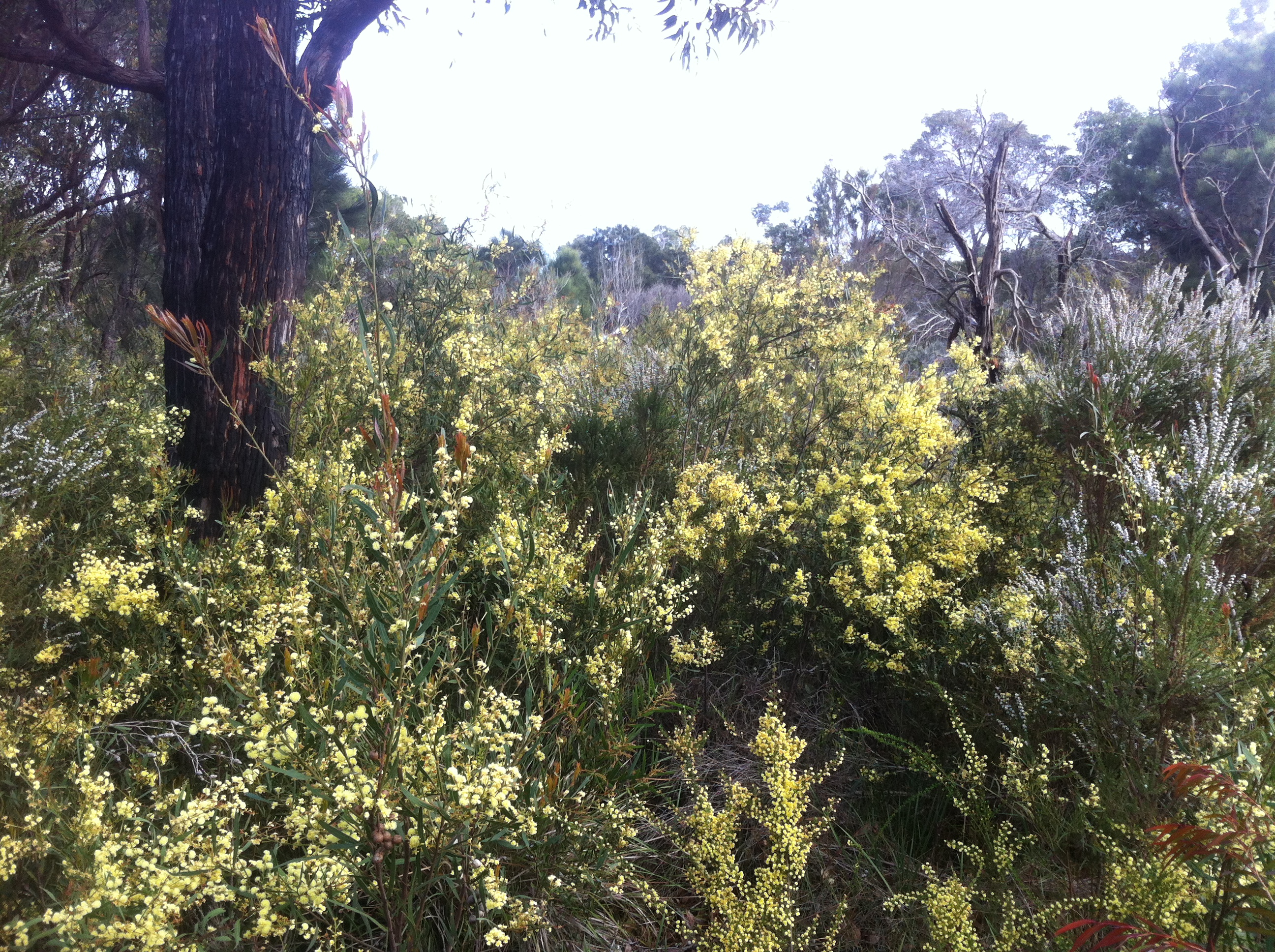Acacia Cochlearis on:
[Wikipedia]
[Google]
[Amazon]


 ''Acacia cochlearis'', commonly known as the rigid wattle, is a shrub of the genus ''
''Acacia cochlearis'', commonly known as the rigid wattle, is a shrub of the genus ''


 ''Acacia cochlearis'', commonly known as the rigid wattle, is a shrub of the genus ''
''Acacia cochlearis'', commonly known as the rigid wattle, is a shrub of the genus ''Acacia
''Acacia'', commonly known as the wattles or acacias, is a large genus of shrubs and trees in the subfamily Mimosoideae of the pea family Fabaceae. Initially, it comprised a group of plant species native to Africa and Australasia. The genus n ...
'' and the subgenus ''Plurinerves''. It is native to an area along the coast from the Goldfields-Esperance to the Mid West
The Midwestern United States, also referred to as the Midwest or the American Midwest, is one of four census regions of the United States Census Bureau (also known as "Region 2"). It occupies the northern central part of the United States. I ...
regions of Western Australia
Western Australia (commonly abbreviated as WA) is a state of Australia occupying the western percent of the land area of Australia excluding external territories. It is bounded by the Indian Ocean to the north and west, the Southern Ocean to ...
.
Description
The bushy erect pungent shrub typically grows to a height of with branchlets that are ribbed, glabrous or sparsely appressed-puberulous with straight hairs.Stipule
In botany, a stipule is an outgrowth typically borne on both sides (sometimes on just one side) of the base of a leafstalk (the petiole). Stipules are considered part of the anatomy of the leaf of a typical flowering plant, although in many speci ...
s are present only on young fresh shoots. The trunk and branches have smooth green or brown bark. The leathery leaves have phyllodes or are sessile, patent to ascending, inequilateral basally, subulate-linear, elliptic in shape and straight to recurved. They are mostly in length and wide.
It blooms from July to October and produces yellow flowers. The inflorescence
An inflorescence is a group or cluster of flowers arranged on a stem that is composed of a main branch or a complicated arrangement of branches. Morphologically, it is the modified part of the shoot of seed plants where flowers are formed ...
s are simple with 1–3 per axil and peduncles which are long, Heads are globular with a diameter, containing 30-50-flowers that have a deep golden color. The flowers are pollinated by many different species of insect
Insects (from Latin ') are pancrustacean hexapod invertebrates of the class Insecta. They are the largest group within the arthropod phylum. Insects have a chitinous exoskeleton, a three-part body (head, thorax and abdomen), three pairs ...
s. A moderate number of seeds will be produced during favourable seasons. The green-brown pod which forms later is a linear shape and is slightly raised over the seeds. The pod is approximately long and contains between 10 and 15 of mostly viable black seeds. The valves of the pod will recurve once the seed is shed, usually in December.
Taxonomy
The species was first formally described by the botanistJacques Labillardière
Jacques-Julien Houtou de Labillardière (28 October 1755 – 8 January 1834) was a French biologist noted for his descriptions of the flora of Australia. Labillardière was a member of a voyage in search of the La Pérouse expedition. He pub ...
in 1807 as ''Mimosa cochlearis'' as part of the work '' Novae Hollandiae Plantarum Specimen''. It was then reclassified as ''Acacia cochlearis'' by Heinrich Wendland Heinrich Ludolph (Ludwig) Wendland (29 April 1791, in Hanover – 15 July 1869, in Teplice) was a botanist who authored a number of ''Acacia'' species.
Heinrich Wendland was born on 29 April 1791 into a family well known in botany. His father Joha ...
in 1820 as part of the work ''Commentatio de Acaciis aphyllis''. It was reclassified in 2003 by Leslie Pedley
Leslie Pedley (19 May 1930 – 27 November 2018)IPNILeslie Pedley/ref> was an Australian botanist who specialised in the genus ''Acacia''. He is notable for bringing into use the generic name ''Racosperma'', creating a split in the genus, which r ...
as ''Racosperma cochleare'' then transferred back to genus ''Acacia'' in 2006. The species can be confused with '' Acacia melanoxylon''.
Distribution and habitat
''A. cochlearis'' grows in sandy soils and is found in coastal areas on sandplains and sand dunes. It grows in coastal areas from Lancelin toIsraelite Bay
Israelite Bay is a bay and locality on the south coast of Western Australia.
Situated in the Shire of Esperance local government area, it lies east of Esperance and the Cape Arid National Park, within the Nuytsland Nature Reserve and the Gr ...
, where it is found growing as solitary plants or in dense thickets.
Uses
The shrub is sold as a suitable medium size shrub for gardens in coastal regions or areas with sandy soils. It is also used to stabilise dune or coastal areas. ''A. cochlearis'' establishes quickly and reliably in stabilised soils. Although it is must be protected from high winds it is utilised in mixed plantings with other species such as '' Acacia rostellifera'' and '' Scaevola crassifolia''. It is an indicator of good quality dunes as the species is vulnerable to disturbance once established.Cultivation
''A. cochlearis'' can be grown from seed. The seeds should be soaked in hot water or lightly abraded with fine sandpaper prior to planting. They should be sown in free draining soil and can benefit from the addition of disease-free soil from existing plants to transfer the ''Rhizobium'' bacteria that are important in nitrogen fixation. Plants require a position in full sun.See also
* List of ''Acacia'' speciesReferences
{{Taxonbar, from=Q15289438 cochlearis Acacias of Western Australia Plants described in 1820 Taxa named by Heinrich Wendland